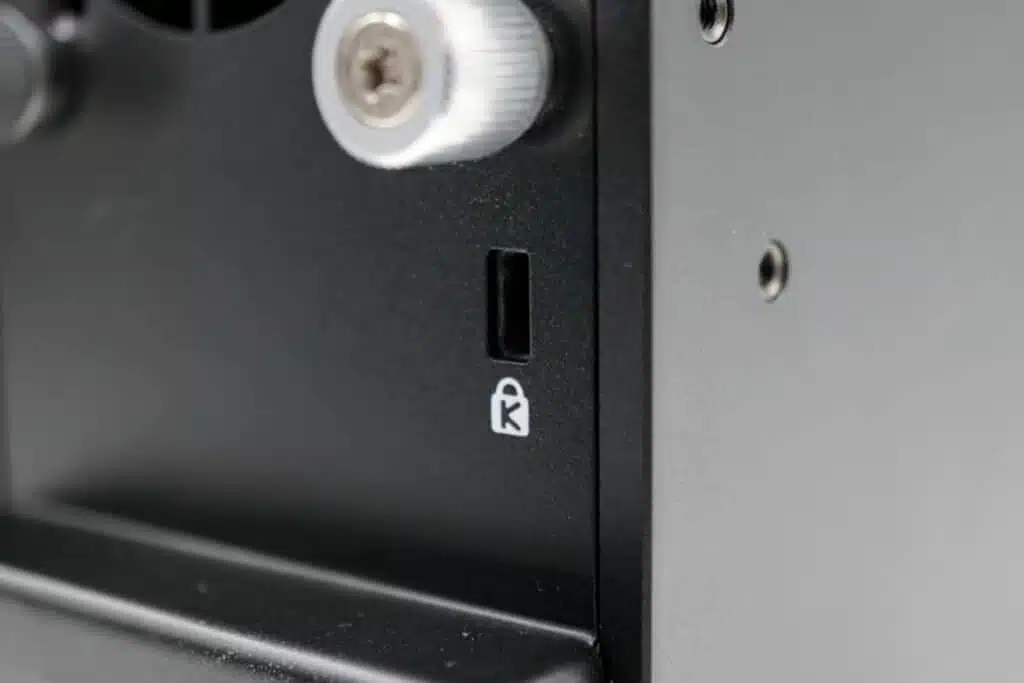17.09.2019

In 1992, the Kensington company launched the first laptop lock called the Kensington Lock. This is a lock for securing devices such as notebooks or even mini PCs against theft. The term "Kensington Lock" has now become established for all locks that work according to the same principle.
The lock is usually fitted with a wire rope and an eyelet at the end. When open, it can be looped around objects such as a piece of furniture and then locked with a key or even a combination lock.
A Kensington Lock is a good choice for deterring opportunist thieves. Professional thieves with the right equipment will probably not be deterred by this lock either. It is also essential that the lock is used correctly and sensibly. For example, care should be taken to only attach the lock to furniture that is difficult to move or similar.
To be able to use such a lock, the Mini PC or the device used must be equipped with the standardized standard connection. This is called the Kensington security slot and is used by many major brands. The slot is approx. 3 x 7 mm in size and is often secured with a metal in plastic housings so that the lock cannot simply be broken out. On some devices, the slot is even connected to system-relevant components that render the system unusable in the event of theft.

Deep learning is a sub-area of machine learning and is based on deep neural networks. It is speciall...

For the last time this year, it's "What's New?" at spo-comm. We still have important information to ...

The form factor is particularly important in the development of Mini PCs for industrial and embedded...
I have read the data protection information.
Otto-Kraus-Straße 4c
D-90411 Nuremberg
Phone: +49 (0) 911 / 23 98 37 – 0
E-mail: info@spo-comm.de
You need to load content from reCAPTCHA to submit the form. Please note that doing so will share data with third-party providers.
More Information